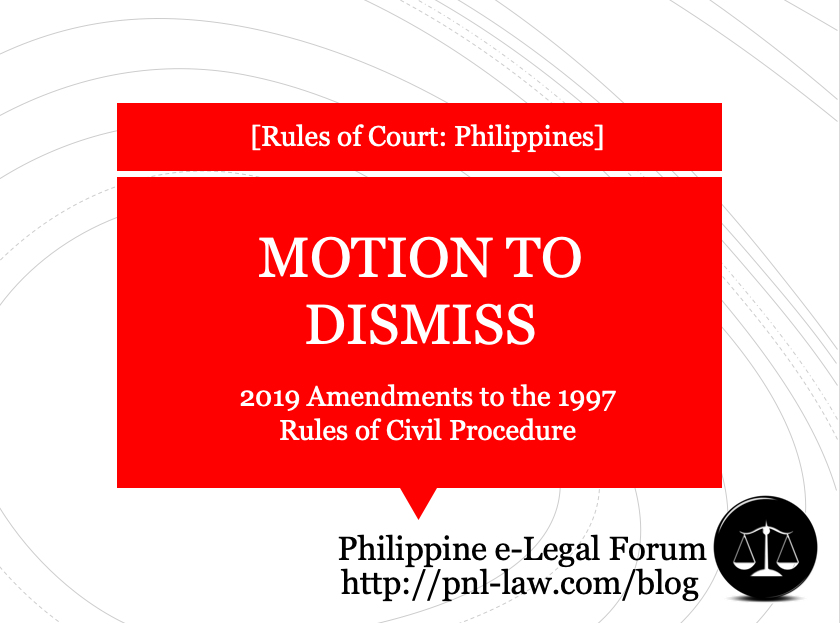There are major changes in the rules governing motions to dismiss under the 2019 Proposed Amendments to the 1997 Rules of Civil Procedure (hereinafter, “2019 Amendments”), which takes effect on 1 May 2020. To begin with, the 2019 Amendments deleted the entire Rule 16 (“Motion to Dismiss”) of the 1997 Rules of Civil Procedure (hereinafter, “1997 Rules”). There seems to be an intent to strongly discourage the use of motions to dismiss.

I. PERIOD TO FILE NOT PROVIDED
The 2019 Amendments does not expressly provide when a motion to dismiss may be filed, as well as the effect of the filing/denial of the motion. Under the old 1997 Rules, a motion to dismiss may be filed before the filing of the Answer and, if the motion is denied, the movant still has at least 5 days within which to file an Answer. These provisions are not found in the 2019 Amendments.
The most logical implication of the deletion is this — the filing of a motion to dismiss does NOT toll the running of the 30-day period to file an Answer (the 2019 Amendments also extended the reglementary period from 15 days to 30 calendar days).
II. GROUNDS FOR MOTION TO DISMISS
A motion to dismiss is a prohibited motion (Rule 15, Sec. 12), except when it is filed on the basis of the following grounds:
- 1) That the court has no jurisdiction over the subject matter of the claim;
- 2) That there is another action pending between the same parties for the same
cause; or - 3) That the cause of action is barred by a prior judgment or by the statute of
limitations;
The issuance of an order granting a motion to dismiss or affirmative defenses, based on the three grounds enumerated above, bars the refiling of the same action or claim.
Except these three grounds, defenses and objections not pleaded either in a motion to dismiss or in the answer are deemed waived (Rule 9, Sec. 1).
III. VOLUNTARY APPEARANCE
A motion to dismiss is a prohibited motion if not based on the three grounds mentioned above. This may give rise to the impression that only three grounds may be used to support a motion to dismiss. However, the 2019 Amendments recognizes one more ground — lack of jurisdiction over the person of the defendant (Rule 14, Sec. 23).
Rule 14 of the 2019 Amendments provides that the inclusion in a motion to dismiss of other grounds aside from lack of jurisdiction over the person of the defendant shall be deemed a voluntary appearance of the defendant (Sec. 23). This is a reversal of the previous rule (Rule 14, Sec. 20 of the 1997 Rules) that the inclusion in a motion to dismiss of other grounds aside from lack of jurisdiction over the person of the defendant shall not be deemed a voluntary appearance.
Incidentally, in case of a motion to dismiss based on improper service of summons, the court may deputize the defendant’s counsel to serve the summons. [See also Rules on Summons]
In case of affirmative defenses, however, raising other grounds (in addition to lack of jurisdiction over the person of the defendant) does not amount to a voluntary appearance.
IV. HEARING ON MOTION TO DISMISS
While a motion to dismiss is a litigious motion (Rule 15, Section 5), the court has discretion not to hold a hearing and proceed to rule on the motion. [See Rules on Motions]
If the same ground is raised as an affirmative defense, the court may motu proprio dismiss the case.
